Chamfer vs Bevel:Explained And Their Difference
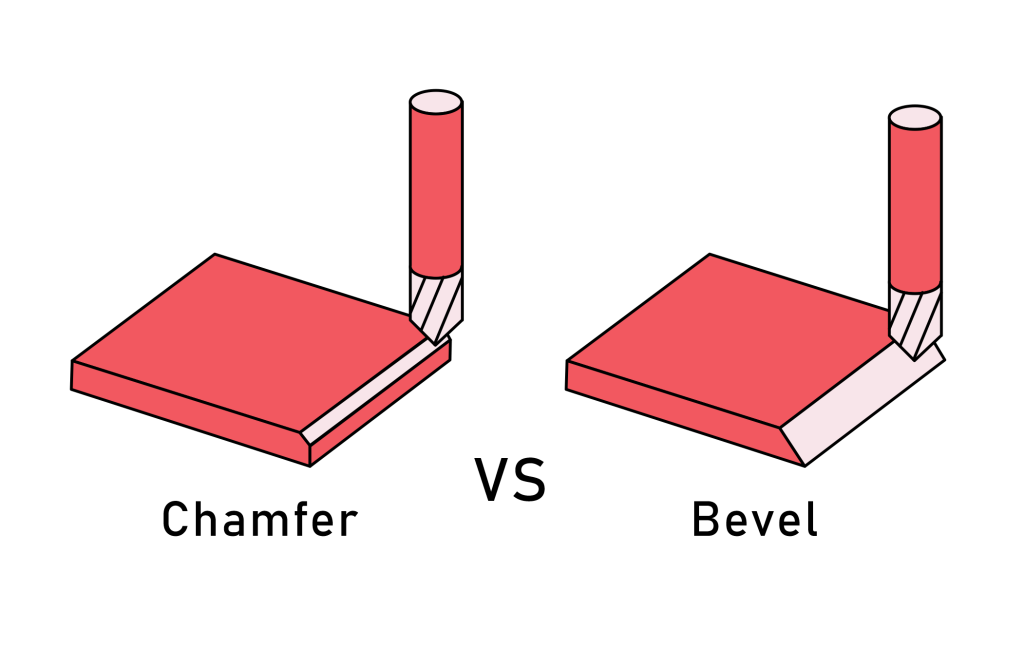
In metalwork, plastic work, and machining applications, it is common to eliminate sharp 90-degree corners as they can damage parts or inflict injury. Two features are typically used to eliminate the sharp eges. These are: Chamfer and Bevel.
While the terms bevel and chamfer are often used interchangeably, there is a clear difference between the two. It is important to understand the difference between these features, especially if you handle materials that need precision cuts or shaping.
In this article, I’ll examine the differences between a chamfer and a bevel focusing on aspects such as their geometry, machining method, and more. I’ll also compare the functions of a bevel vs chamfer in great detail. Read on to gain insights on this topic!
What is Chamfer?
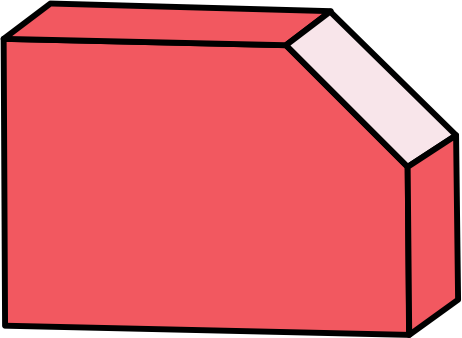
A chamfer is a cut that is made on the edge of a workpiece between two adjoining surfaces, usually perpendicular to each other. A chamfer is typically created at a 45° angle. It’s distinguishing feature is that it doesn’t extend over the entire plane between the two surfaces that are parallel to each other.
Chamfered edges have a variety of functions during the manufacturing process. They remove sharp edges from workpieces and, therefore, facilitate safe handling. Chamfering also aids in the assembly of parts and serves a cosmetic purpose by improving the look of machined parts. Chamfer mills and chamfer planes are some of the tools used to machine chamfers.
What is Bevel?
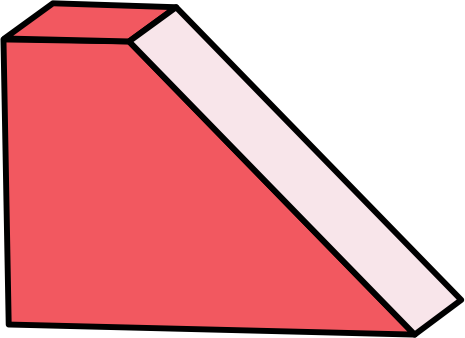
A bevel refers to an angled cut that connects two parallel surfaces of a part. This sloped edge facilitates the assembly of workpieces while also improving the aesthetics and safety of machined parts.
Unlike a chamfered edge which covers a fraction of the plane between two parallel surfaces, a beveled edge runs for the entire length of the plane. Therefore, we take out more material to create beveled edges compared to chamfered edges.
The bevel angle will generally vary depending on the intended function of the bevel edge. However, most beveled edges feature a 45-degree angle.
Difference between a Chamfer and a Bevel
Now that you have a better understanding of the basics of chamfers and bevels, I’ll get into the differences between these two features.
Chamfer Vs Bevel: Method of Measurement
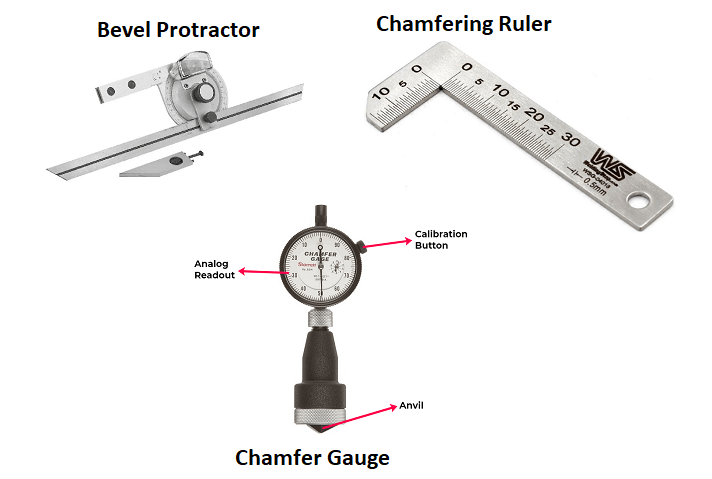
An optical comparator and chamfer gauge are typically used to measure the dimensions of a bevel and chamfer.
The optical comparator is equipped with a magnifying lens that zooms in and focuses on the sloping edge. This makes it easier to obtain the dimensions of the slanting surfaces. Optical comparators can either be manual or digital with the latter being easier to use.
A chamfer gauge has a anvil positioned inside a spring-loaded plunger. The anvil sits on the sloping surface and measures the dimensions of the chamfer or bevel. A chamfer gauge can be analog, digital, or automated by attaching it to a CNC-based robotic hand.
While the optical comparator and chamfering gauge can be used for both bevels and chamfers, there are specialized tools that are specific to either type of cut.
A bevel protractor is an angle measuring tool that is specific to bevels. It consists of a circular angle scale sitting between two rotary blades that are interlinked with each other. To measure the bevel angle, we position one blade on the bevel and the other on the adjacent top surface. A bevel protractor is capable of measuring angles to very tight tolerances.
A chamfering ruler is stainless steel scale specially designed to measure chamfers only. This L-shaped apparatus consists of two connected scales that are perpendicular to each other. This chamfer tool is positioned on the horizontal and vertical sides of the part to indicate the leg lengths. With these dimensions, it becomes easier to calculate the chamfer angle and chamfer length.
Chamfer Vs Bevel: Based on the Connotation
As we’ve previously established, a bevel primarily refers to a diagonal cut or material removal process that links two parallel surfaces. However, beveling does not always mean cutting.
Sometimes, the manufacturing process will produce a workpiece that has an inclined edge that joins two parallel surfaces. This sloping edge is also referred to as a bevel.
On the other hand, chamfering means cutting. Therefore creating a chamfer always involves a material removal process.
Chamfer Vs Bevel: Shape
The main difference between a bevel and chamfer is in their shape and geometry. A chamfer is typically cut at a 45-degree angle. This slanting edge connects two adjacent surfaces of a workpiece.
A bevel can be at any angle, though 45 degrees is used in most applications. Unlike a chamfer, this sloped or angled edge joins two parallel surfaces of a workpiece.
Starting with a square workpiece, if you chamfer all corners, the resulting internal chamfer geometry will have an octagonal shape. Contrarily, the interior of a completely beveled prismatic-shaped workpiece would be a rhombus.
Chamfer Vs Bevel: Machining Method
Another difference between a bevel and chamfer lies in the cutting tools used to machine these sloped surfaces.
To create beveled edges, we’ll typically use a specialized bevel tool. For example, a plate beveling machine is commonly used to create a beveled edge in a flat surface. A pipe beveler is a bevel tool that removes material from the edge of a pipe or tube to create an angled surface.
Machining chamfered edges involves using a standard milling machine that is equipped with a chamfer end mill. Also, a chamfer on cylindrical billets can be created through the process of rotary broaching in a lathe machine.
With the right angle, a chamfer tool can be used to machine beveled edges. In CNC machining, this would mean numerous cutting tool passes and, therefore, an increased production time.
Chamfer Vs Bevel: Function
A bevel and chamfer serve both cosmetic and non aesthetic purposes.
The fundamental function of a chamfer is to remove sharp corners as they are a safety concern. Chamfering also plays a significant cosmetic role. For instance, adding chamfers to furniture such as mirrors and glass table tops creates an appealing design element.
A chamfer can also reduce stress concentration at certain points and boost their load bearing capacity.
Beveled edges facilitate precise fitting of machining parts. They create bevel joints and transitional edges that allow for smoother fitting of components.
Beveling also adds to the beauty of machined parts. Relieving the sharp edges of right angles can give the impression that a product is better engineered.
Why Design Chamfers and Bevel for the Parts?
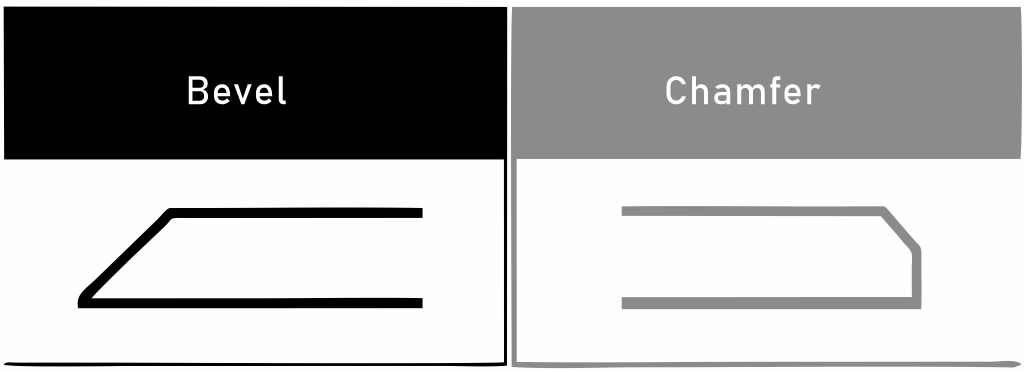
Now that we’ve established the definitions and differences between a bevel and chamfer, you may be curious about the purpose of these features.
Bevels and chamfers are common features across industries and they have a significant impact on different aspects of a workpiece. These range from functional to purely cosmetic.
In this section, I’ll review the significance of incorporating bevels and chamfers when designing parts and explore some common applications of these features.
#1 Provide Safety
One of the main purposes of chamfers and bevels is to eliminate sharp corners. A sharp edge is an obvious safety concern since it increases the risk of cuts and injuries when handling the work piece. Further, loose items of clothing can easily get snagged on these such surfaces.
Chamfering involves removing material from the sharp edges of machined parts and creating blunt edges instead. The less sharp corners are easier to handle as they provide a reduced risk of injury. For example, furniture such as counters and table tops will often have chamfered edges for safety purposes. You’re, therefore, less likely to hurt yourself on these surfaces since sharp edges have been eliminated.
Similarly, beveling will soften one edge of the workpiece and therefore minimize the risk of accidents on the sharp point of a 90 angle. However, a bevel tends to create a sharp point on the second edge of the workpiece. Therefore, bevels are better suited for applications that do not call for holding the workpiece.
That being said, beveling promotes the perfect fit of components and this contributes to the overall safety of the workpiece.
#2 Assembly and Disassembly
Both bevels and chamfers are necessary for complex assemblies. If two components are to be joined, each would need be chamfered before the assembly. When the two chamfered edges are put together, they create a 90 angle with a hidden joint neatly tucked in the center.
Most nuts and bolt heads also feature chamfered edges. Removing sharp corners improves their strength and the ease of handling. If these fasteners were to have sharp edges instead, they would be more prone to cracking under the force of a wrench.
A bevel’s slope also plays an important role in the assembly and disassembly of components. For example, if you’re joining two long wooden surfaces, creating bevels in each panel would allow for better access, surface contact, and secure fastening.
#3 Decorative Purpose
While chamfers and bevels have a range of functional roles, they also serve aesthetic purposes. Eliminating sharp edges from workpieces improves the overall look of the machined parts. Further, the absence of sharp corners may suggest that a product is better engineered or more effort went in to the design.
The decorative aspect of the chamfer feature means that it’s frequently incorporated into wood working projects. Chamfers improve the final look of the products by delivering smooth and elegant edges.
Also, jewelry makers will often incorporate chamfers and bevels into their products. These features add an interesting dimension to the design of the pieces.
#4 Fit and Alignment
Angled edges have proven more effective in assemblies as they fit together effortlessly. By creating sloped edges at the correct angles, you can facilitate the perfect fit and alignment of parts.
If two objects need to fit together, chamfering their edges creates a smooth “lead-in” for the fit. For example, if you’re drilling a hole for a fastener, chamfering the tip of the hole allows for the fastener to fit snugly creating a flush joint.
Beveling creates tapered surfaces that engage better with other pieces. In complex assemblies, like a wooden rack assembly, individual parts are beveled so that they can align and fit together perfectly. A beveled surface also allows for effective fastening.
#5 Reduced Friction
Bevels and chamfers create smoother edges and gradual transitions that reduce friction. Decreased friction is vital in sliding or mated components and it also improves wear resistance.
For example, beveling is commonly used in the automotive industry to create bevel gears. The beveled tooth profile on these systems facilitates proper engagement and, therefore, reduces friction and power losses during movement.
Similarly, brake pads often utilize chamfers. Chamfered break pads have the effect of reducing brake vibration, noise, and unnecessary friction.
#6 Manufacturability
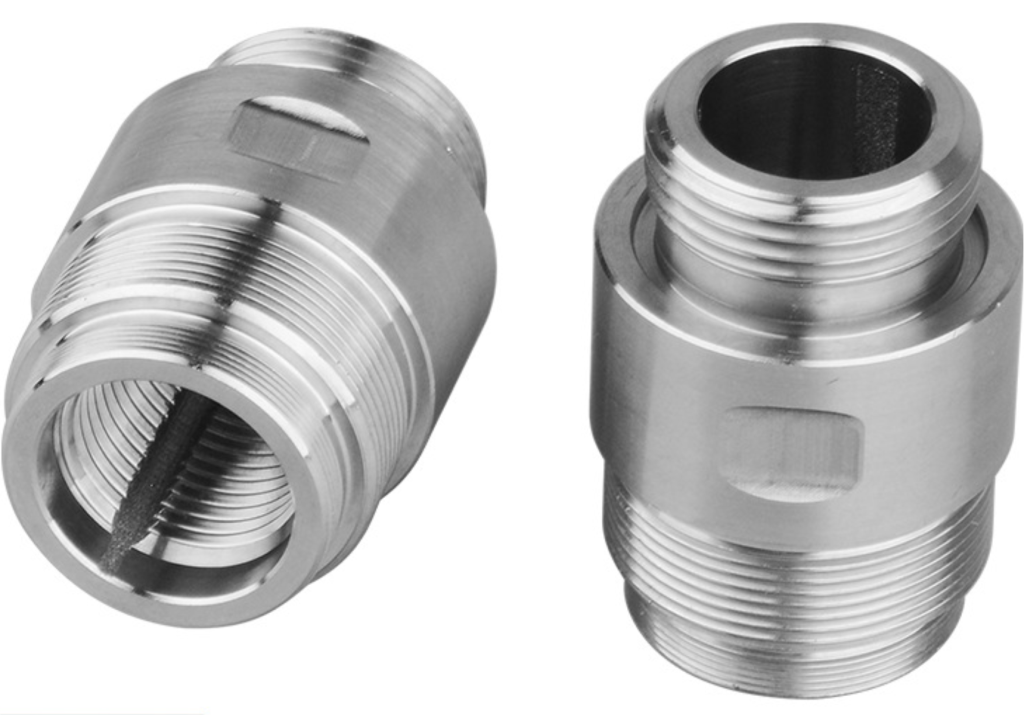
In most cases, bevels and chamfers are created after the manufacture of a workpiece. Adding extra features increases the machining time and subsequently, the manufacturing costs.
However, if a chamfer or bevel is essential in your product there are ways to simplify manufacturing and make the process more cost effective. This would involve designing chamfers or bevels into the part geometry instead of eliminating corners through secondary machining operations.
For example, the machine shop can use special die where the parts produced already feature bevels and chamfers. Eliminating secondary beveling or chamfering would reduce the production time and cost.
Alternatively, the machine shop can simplify manufacturing by providing large tolerances if precise dimensions are not crucial. Tighter tolerances mean increased machining time and therefore higher production cost.
Further, chamfering may cut down on the amount of time required to machine right angles into a part.
Conclusion
There you have it! I hope that you’ve gained insights on the purpose of bevels and chamfers and the fundamental differences between these features.
To recap, beveled and chamfered edges are vital in creating aesthetically pleasing, stronger, and safer parts. Thanks to these aspects, beveling and chamfering are used in a variety of industries ranging from machining to automotive and electronics. These simple finishing touches have proven effective in elevating the look and function of machined parts.
In need of products with high-quality beveled or chamfered edges? Aria provides a wide range of manufacturing services including CNC machining. Request an instant, no obligation quote today!
